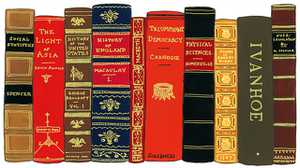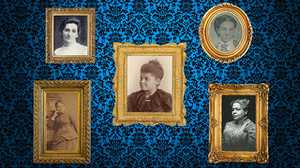Mapping Gilded Age New York
The Gilded Age was a study in contrasts. Immigrants arrived in New York City with little to nothing in their pockets, while just uptown some of the richest men and women in America built mansions that resembled European palaces. As more and more people carved out their homes on the island at the end of the 19th century, different ideas about what New York was and who belonged there emerged. American Experience spoke to Jack Tchen, associate professor at NYU’s Gallatin School of Individualized Study, about the way race and class tensions played out against the vibrant, dynamic landscape of New York City in the Gilded Age
By Jack Tchen as told to American Experience

1. THE SPINE
Leading up to and during the Gilded Age, New York City begins to define itself along its spine, the middle of the city, rather than by its shoreline. The wealthy are gravitating away from the shoreline, which is seen as rougher and more dangerous. If you have money, you’re afraid that the workers in your counting house or your factory are going be jealous. You want to find other people who have money. And Fifth Avenue becomes the place where you find them. From Bowling Green to Washington Square Park, from Washington Square Park to Madison Park, and from Madison Park up to Central Park and 57th Street — this becomes what wealthy white Anglo-American Protestants feel is their New York. They feel that the greatest wealth of the city and of the nation is being generated and being expressed along this spine. The global branding of Fifth Avenue really emerges at a moment in which the Fifth Avenue merchants come together and say, “We have to protect Fifth Avenue. Fifth Avenue is ours and to maintain our identity, we have to keep out all the new immigrants who are trying to make money, who are setting up garment factories.” They begin to re-territorialize what had been a neighborhood of small producers, and to claim a kind of ascendancy and superiority.

2. METROPOLITAN OPERA HOUSE - Broadway and 39th Street
The building of the Metropolitan Opera House in 1883 is a great example of how cultural capital actually works. Did the people who went to the Met love opera? Probably not. In some ways, this was an emulation of European culture, especially Italian culture — but in Italy, opera was actually a mass activity that people from all stations of life loved. In the new world, it was transformed into this rarified art that supposedly only elites could understand. It was stilted in terms of performance, especially in comparison to the more popular forms of theater. And it was in a foreign language.
But the building was important. The box seats were important. Who was sponsoring the performances was important. So in a sense, supporting the opera became the perfect vehicle for elites to outdo each other.

3. VANDERBILT HOUSE — 1 West 57th Street in New York City
Alva Vanderbilt was the driving force behind the “Petite Chateau” Vanderbilt mansion, which was completed in 1883. It was built of limestone, in contrast to neighboring brownstones, in the style of a French Renaissance palace. Her housewarming party was one for the ages. Twelve-hundred guests attended. Their costumes were sheer excess and outré; one woman, Miss Kate Strong (nicknamed “Puss”), wore a taxidermied cat head and seven cat’s tails decorating her skirt. By today’s dollars, the party was said to cost $6 million—one quarter of which went to the finest champagne.
What’s really important here is to acknowledge the role of women in the wealth-building process itself. Because it’s not just wealth building in terms of actual dollars — it’s also wealth building in terms of status. And women are the ones who know how to build that kind of social and cultural capital that gives their families the standing and prestige that other families of wealth will begin to recognize and accept.
In some ways, the women who are leading these families and creating these parties are like the ad men on Madison Avenue. They’re branding the family. They’re making the public — other elites especially — appreciative of why they belong and why they should be recognized widely. So when Alva Vanderbilt builds her mansion, she’s being very creative, very thoughtful, and very tenacious in trying to establish that profile of the Vanderbilt family.

4. SEVENTH REGIMENT ARMORY - 640 Park Ave., Bet. East 66th & East 67th
The street grid of New York City means that people of great wealth are cheek-to-jowl next to people living in extreme poverty. That sense of injustice and the divide between the wealthy and the poor is palpable.
The Gilded Age was a fractious time, and amidst growing wealth and opulence, a sense of desperation and resentment emerged. I think the wealthy felt some anxiety at the thought that at some point that tension would erupt.
So they built armories to defend against riots and protests. The armories housed volunteer regiments — the precursor of the National Guard. The Seventh Regiment, also known as the “Silk Stocking” or “Blue-Bloods” regiment, was a who’s who of the Gilded Age elite. It was first headquartered on the Lower East Side — but it moved uptown as the wealth of the city did. The armory now on Park Avenue opened its doors in 1880.

5. HARBOR
New York Harbor was deep enough that it didn’t freeze over, so it could actually operate year-round. Lots of raw products — grains, sugars from the Caribbean — can all be exchanged in this deep-water port and then processed and sent by way of the Erie Canal into the heartland, and also traded across the Atlantic. So New York becomes kind of a central economic exchange hub, feeding and processing so much of what is being consumed by the growing middle classes of North America, and Europe.

6. ORCHARD STREET
As the wealthy Protestant elite move uptown, away from the waterfront, the lower east side becomes a neighborhood of immigrants. Jewish and Italian immigration really starts in great numbers in the latter part of the 19th century. Millions of people are coming to New York. They’re dazzled by visions of streets of gold.
The older tenements on the lower east side become jam-packed. The whole notion of a middle class apartment with one person in a room — that didn’t exist. A single apartment could house multiple extended family members; a family might even rent out a room to make ends meet. The idea of how you used space was different. The streets were really an extension of where you lived.
Take the market on Orchard Street. It was really an American reproduction of the small market towns that many Jews had left in eastern Europe. If you look at old photos, you can just imagine the sounds and smells. Jews, Italians, and Chinese are living side by side. And out of that, a port culture begins to emerge. People are bringing the cultures that they left. Lots of languages are being spoken, and lots of new dishes and new fashions are being created. It’s all part of this new, intermingled culture. And that intermingling, I think, is what’s distinctive to New York City — as opposed to the culture of the uptown elites, who are really emulating their fantasy of the european aristocracy.
The uptown elites, by the way, are really scared of this new, intermingled port culture. They have a certain notion of Protestant destiny in terms of who this country properly belongs to. They’re concerned with who’s creating value — monetary, but also the cultural value of the nation. Meanwhile, these non-Protestants of suspect racial origin keep coming into the city. So there’s a growing guardedness of who should count, who belongs there.

7. BOWERY
While the elites are walking up and down Broadway, checking each other out in a way that prefigures the shopping mall or the arcade, immigrants and members of the white working class hang out on the Bowery. It’s where people go for dime museums, tattoo parlors, bars; all that kind of popular culture that we tend to think of now as connected to Coney Island originates on the Bowery.
These new immigrant and working class audiences are constantly looking for new and exciting forms of expression. They’re willing to pay maybe five cents to see what’s happening on the stage, what’s happening in music, and in bars. Essentially, what happens is street culture gets brought into the commercial culture, the indoor culture in which people are willing to pay for entertainment.

Published February 2018.








